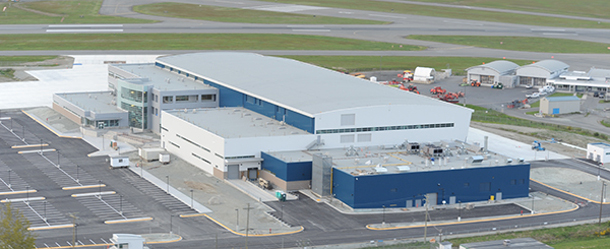Recent visitors to Victoria International Airport will have noticed a massive silver-and-blue hangar on the west side of the airfield. At 215,280 square feet, the new building's floor area is larger than three soccer fields.
Built to house the Royal Canadian Air Force's much-anticipated Cyclone maritime helicopters, the hangar has cost taxpayers a cool $104 million. That's a lot of money for a facility to house and service just nine aircraft.
But the price tag is not the only intriguing thing about the hangar. Curiously, the building has not been officially opened -- despite having been completed six months ago.
The reason for the delayed official opening is rather obvious: The Cyclones have yet to be delivered. A photo-op without them -- or, worse yet, with the 51-year-old Sea Kings they are supposed to replace -- would only highlight what then defence minister Peter MacKay, in 2012, called "the worst procurement in the history of Canada."
Stephen Harper would dearly love to welcome the Cyclones to their shiny new home before next year's election, and is willing to pay a remarkably high price for this to occur. Indeed, in order to ensure a 2015 delivery of at least some Cyclones, Harper has compromised the safety of the helicopters -- and put the lives of their pilots at risk.
Tories pour $1.7 billion into 'paper aircraft'
Conservatives often blame Liberals for the failure to replace the Sea Kings, and to some degree they are right. In 1993, then prime minister Jean Chrétien caused a decade-long delay -- and incurred a $478 million penalty -- when he cancelled a contract for Cormorant helicopters that the previous Mulroney government had signed. It was not until 2004 that the Martin government signed a new contract, this time for Cyclone helicopters that then existed only as designs on paper.
Signing a contact for "paper aircraft" was a serious mistake. Nevertheless, when Harper became prime minister in 2006, he embraced the Cyclone procurement. He even allowed defence officials to add new electronics and weapons systems to the design, the added weight of which necessitated more powerful engines, which in turn required a time-consuming, full re-engineering of the aircraft.
The addition of new systems after the contract made it impossible to impose penalties for subsequent delays -- of which there have been many -- because Sikorsky would then have had grounds to sue the Harper government in response.
The Harper government also placed itself in a position of considerable financial exposure. To date, it has spent $1.7 billion on development costs, flight simulators, and other support systems for the Cyclones without securing the delivery of a single operational helicopter.
Unable to be penalized, and with only Canada having been foolish enough to order Cyclones, Sikorsky has been loath to spend money to achieve the most demanding of the performance requirements set out in the 2004 contract. The result was an awkward and politically inconvenient impasse.
Safety requirements dropped
In June 2014, the Harper government surrendered to Sikorsky by renegotiating the contract. In return for a 2015 delivery, it reduced the company's development costs by eliminating two key safety requirements: a 30-minute "run-dry" capability and an automatic life raft deployment system.
To satisfy a 30-minute run-dry requirement, a helicopter must be able to stay airborne for 30 minutes following the loss of oil from the main rotor gearbox.
In 2004, Sikorsky's proposal for the Cyclone was based on an existing civilian helicopter, the S-92, which Sikorsky claimed had a 30-minute run-dry capability. That claim proved false in 2009, when an S-92 crashed off Newfoundland following a catastrophic oil leak from the main rotor gearbox, killing 17 people.
In its report on the S-92 crash, the Transportation Safety Board addressed the 30-minute run-dry requirement that exists for the certification of civilian helicopters. It recommended the removal of an exemption that is available to manufacturers who can establish that the risk of a total loss of lubrication is "extremely remote." Unfortunately, the recommendation was not followed.
Today, the Harper government points to the continued exemption for civilian helicopters as justification for removing the run-dry requirement for the Cyclone.
The second key safety requirement eliminated by the Harper government was for an automatic life-raft deployment system. Along with the 30-minute run-dry requirement, this system was intended to protect the lives of Canada's maritime helicopter pilots, whose day-to-day operations involve flying over remote, cold and stormy seas.
Many of these young men and women will undoubtedly be present at next year's pre-election photo-op in front of the shiny new hangar at Victoria International Airport. There, they will hear Stephen Harper boast about delivering on a procurement that the Liberals failed to complete.
But will our pilots celebrate the Cyclone helicopter on the tarmac, knowing that its safety features have been compromised -- by a prime minister playing politics with their lives? ![]()
















Tyee Commenting Guidelines
Comments that violate guidelines risk being deleted, and violations may result in a temporary or permanent user ban. Maintain the spirit of good conversation to stay in the discussion.
*Please note The Tyee is not a forum for spreading misinformation about COVID-19, denying its existence or minimizing its risk to public health.
Do:
Do not: